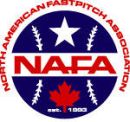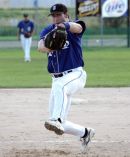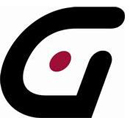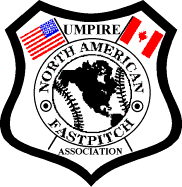


![]()
![]()
|
NAFA Two-Person Mechanics
|
|
NAFA Two-Umpire SystemNo Runner On Base Theory
TWO APPROACHES:
PREMISES:
POSITIVES: Foul Line 1. Can cover the first base foul line beyond the base umpire. 2. Could help on F/F from plate to umpire if needed (see negative #3). 3. Can see the foot in contact with the pitcher’s plate better. 4. Better look at check swing. Slot 1. More field coverage. 2. Already in the diamond, no decision to go in or stay out. 3. Better position for base hit or line drive to right with possible throw to first. 4. Already in the diamond for overthrow at first from right field. 5. Base hit to left or center can stay outside the diamond and allows you to keep the four elements in front of you (with button hook you take eyes off the ball and turn back to the ball). 6. Better tendency to cover or chase fly balls in base umpire’s responsibility area. 7. On fly balls the slot allows you to track the ball without immediately making a decision to go in or out. 8. Better look at the bunt near home plate from inside the diamond. Let the second baseman clear and follow into position at first. 9. Moving toward the play at first instead of away from it. 10. Away from the first base coach, which prevents socializing between umpire and coach and cuts down on the base coach being nitpicky about the opponent’s pitcher. NEGATIVES: Foul Line 1. Must go into foul territory for ball hit to right for possible play at first and balls hit between the first and second baseman. 2. Umpires have a bad tendency not to cover any fly balls since fly balls are the plate umpire’s responsibility. 3. Base umpire (as a general rule) will bail out on bounding balls down the line or pop ups in the vicinity of first base to the out of play area. That is why we went from the base umpire not covering the line on bounding balls, to covering from the base and beyond and now back to not covering the line on bounding balls. 4. Most umpires, because they have been indoctrinated to do so, button hook into the diamond on all balls that leave the infield even though on balls hit to left or center it is better coverage to stay outside the diamond (allows you to keep the four elements in front of you). With the buttonhook you take your eyes off the ball and turn your back to the ball). Slot 1. Can provide very little or no help on the first base/right field foul line on fly balls. 2. Can provide no help on the first base foul line on bounding balls. 3. Cannot see the front edge of the pitchers plate or the back edge if the pitcher’s foot is minutely off the plate.
Comment: Although this seems to be a major change in a mechanic because “it always has been done this way”, it is not a major adjustment for the umpire. It is not an uncomfortable position or one that has to be learned or relearned because it is a position that the umpire has always been in with a runner on first only. It takes most umpires an inning or two to adjust to the change and almost all comments From those trying it have been positive and if given a choice of the line or the slot, prefer the slot.
NAFA TWO UMPIRE SYSTEM NO RUNNER ON BASE (SLOT)Prior to the pitch
Batted balls to the infield
Fly ball and line drive responsibility in the infield for the base umpire are all fly balls to SS, 2B, and 1B from the baseline and beyond. Plate takes fly balls to 3B and balls caught with an infielder coming toward the plate inside the baselines. Batted balls to left field, left center and center fieldBase hit
Fly ball or line drive
Extra Base hit
Batted Balls to right and right center fieldBase hit
Fly ball or line drive
Note. The base umpire should take all potential line drive traps in the infield except to the fielder in front of the umpire. Plate umpire has all fly balls near the line or in foul territory. Fly ball philosophy difference for base umpires when responsible for a fly ball.
3 umpire system A base umpire will go out on all fly balls in the outfield unless it is the plate umpires responsibility. Umpire goes out, stays out until all play is over. NAFA base umpires take all fly balls and traps to the infield that are their responsibility. 2 umpire system. Base umpire will call all fly balls that are in the Base umpire’s responsibility area of responsibility. The base umpire may go out (chase) potential traps, balls near the fence or balls that might be difficult for a player to catch or simply turn and cover fly balls that are routine or can be easily covered from the infield position. If the base umpire chooses to Chase the plate umpire assumes responsibility for all base runners, but the base umpire may return to help the plate umpire in certain circumstances; multiple runners, etc.
Fly ball coverage is the same when the base umpire is in the slot between third and short with the only exception being the reversal where that the base umpire covers the third baseman and the plate umpire covers the first baseman.
The most important element in a two-umpire system is great eye contact and communications.
NAFA TWO UMPIRE SYSTEM NO RUNNER ON BASE (SLOT)FLY BALL COVERAGE
RED U RESPONSIBLE FOR RED PLAYERS AND ARROWS
BLUE U RESPONSIBLE FOR BLUE PLAYERS AND ARROWS |
|
2008 North Mankato, Minnesota
2008 World Series Middleton, Wisconsin
2008 Zones
2008 Wood Bat Longmont, Colorado
2009 Appleton, Wisconsin
|

